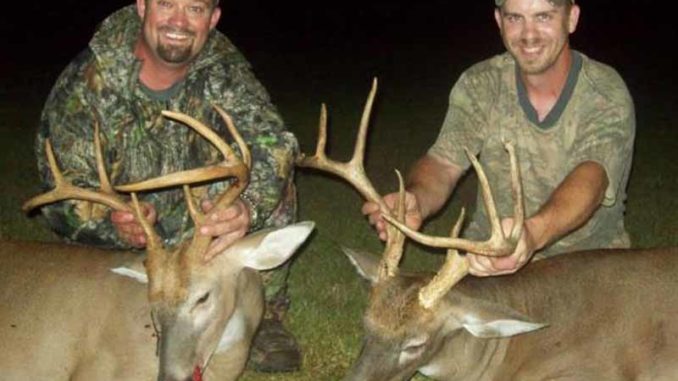
How to improve trophy buck ratio on your land
In the heart of Williamsburg County’s agriculture belt is an elite hunting organization, White Oak Hunt Club. Founded in 2000 by Grier Copeland and Will Carter, White Oak prides itself as one of the premier hunting clubs in the Carolinas. From food plots, mineral supplements, harvest restrictions, secure land holdings and very limited pressure, White Oak strives to produce trophy animals on its 6,000 acres.
White Oak could not be in a more productive county in South Carolina. Williamsburg, one county inland from the coast, is one of South Carolina’s top counties for deer harvests, with about 8,500 deer taken every year, and it produces some real wall-hangers, ranking sixth all-time in the number of bucks in South Carolina’s record book.
Copeland, president of the club, is always working towards a better process to improve the trophy buck ratio for his limited membership of around 20. During the 2012 season, White Oak hunters took three bucks ranging from 125 to the upper 140s, and many other similar bucks were observed but were passed up in hopes of a true monster.
“Every year, we kill around 25 good bucks, with a handful eligible for the (S.C.) record book,” Copeland said. “We have tight restrictions on both size and the total number of bucks, but our members have no problem passing up a plenty of good bucks in hopes of seeing that wall hanger they can be proud of.”
Copeland believes the key is to his success on his club is a direct result of light hunting pressure and the practice of letting deer grow up and reach their full potential. With more than 70 stands scattered across the 6,000 acres, deer barely even know that it’s hunting season.
Nevertheless, habitat management, mineral availability and food production rank high in the club’s annual budget. Over the spring and summer, Copeland replenishes mineral blocks frequently; he’ll go through 150 between April and August.
White Oak provides its herd with huge food resources. Approximately 1,400 acres are under active agriculture production, with rotations of corn, soybeans and peanuts. Additionally, the club maintains approximately 50 acres of land dedicated to food plots, with both warm-season and cool-season crops in production every year. Currently, the food plots are covered in perennial clover, buckwheat, chufa and peanuts. Copeland plans to plant naked oats and Durana clover this month.
Beyond plantings and agriculture fields, White Oak Hunt Club is blessed with swampland and a collection of pine and hardwood forests in various age classes. White Oak understands the value of prescribed burning. Copeland and his work crews burn 60 percent of their woodlands annually, and the remaining forested acreage is burned every other year.
White Oak Hunt Club is a unique organization with land stewardship just as important as killing a deer.
“We have the highest respect to nature and the animals we harvest from it and our club strives to leave our vast acreage in better condition than it was before us,” Copeland said.




Be the first to comment